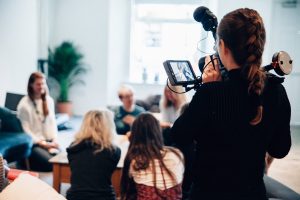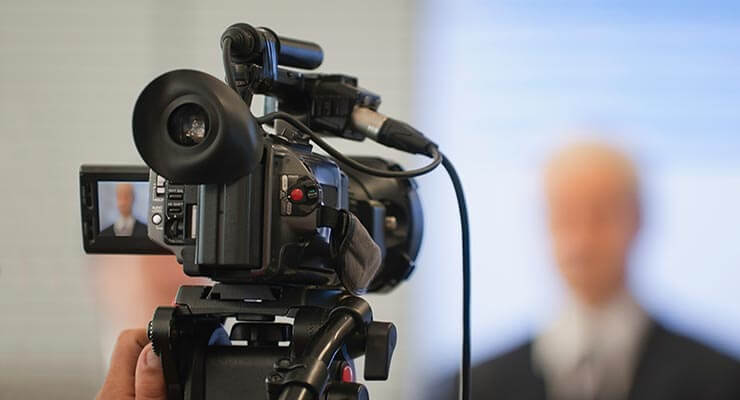Why Lawful Videography Is Essential for Accurate Legal Record-Keeping
In the world of legal process, the precision of record-keeping is extremely important, and lawful videography emerges as an essential tool in this context. By capturing the subtleties of spoken and non-verbal communication, it substantially lowers the potential for misinterpretation that can come with traditional written records. Furthermore, the preservation of genuine visual proof not only boosts the integrity of statements yet likewise adds to a thorough account of occasions. As we discover the multifaceted advantages of lawful videography, one have to consider its ramifications for the future of judicial stability and transparency - legal videography.
Significance of Visual Proof
Establishing the value of visual proof in legal procedures is extremely important for guaranteeing exact record-keeping and enhancing the total stability of the judicial process. Visual proof functions as a critical tool in documenting events, problems, and various other pertinent details that may be essential to a case. Unlike composed accounts, which are vulnerable to analysis and bias, visual recordings offer a purpose, unalterable representation of realities as they took place.


This type of evidence can capture a selection of components, including witness behavior, ecological context, and physical evidence, all of which may influence judicial end results. By presenting a clear and extensive aesthetic narrative, lawful videography gets rid of obscurity and aids to preserve the authenticity of the evidence.
Additionally, aesthetic proof can be instrumental in decreasing conflicts over accurate discrepancies, as it enables a straight comparison versus testament and various other documented documents. In an age where electronic innovation is increasingly common, the ability to present aesthetic evidence efficiently can substantially improve the overall top quality of lawful process. Eventually, the consolidation of aesthetic evidence not only boosts the documents process however additionally strengthens public count on the judicial system by advertising openness and liability.
Enhancing Testament Integrity
The combination of lawful videography into courtroom process substantially enhances the reputation of witness statement. By catching the subtleties of verbal and non-verbal interaction, video recordings provide an even more comprehensive representation of a witness's temperament, feelings, and integrity. This visual documentation enables jurors to observe the witness's body language, faces, and general conduct, which are important components that can influence their perception of statement reputation.
Furthermore, legal videography minimizes the potential for false impression or distortion of testament that might take place in created records. Visitors can see and listen to the testimony as it was offered, making sure that the context and tone are preserved. This credibility fosters a greater feeling of trust amongst jurors, who might be much more likely to think testimony that they can witness firsthand.
In addition, the existence of video footage can discourage witnesses from giving misleading or exaggerated declarations, as they are conscious that their testimony is being check here tape-recorded. This responsibility strengthens the stability of the judicial process. Inevitably, lawful videography functions as an important important link device in guaranteeing that witness testament is not just accurately illustrated yet additionally watched with increased reliability by all events included.
Comprehensive Document Conservation
Comprehensive record preservation is vital for preserving the honesty of legal proceedings. Legal videography acts as a critical tool in this process, providing an exact visual and acoustic account of statements, depositions, and other zero hours in an instance. Unlike traditional written records, video recordings catch the subtleties of body movement, tone, and emotion, which are crucial for understanding the context and intent behind statements made during lawful proceedings.

Additionally, the capability to review video clip proof enables lawyers to recognize important details that may have been ignored in composed records. By preserving a comprehensive archive of legal procedures via videography, law practice can maintain the highest possible requirements of precision and liability, ultimately adding to a fairer judicial process.
Improving Lawful Proceedings
Streamlining legal procedures is vital for enhancing performance and minimizing hold-ups within the judicial system. Lawful videography functions as a critical device in attaining this objective by giving clear and accurate visual documentation of court hearings, depositions, and testaments. This technology allows for real-time recording, guaranteeing that all spoken and non-verbal cues are recorded, which can promote quicker resolution of disputes.
The assimilation of videography into legal processes minimizes dependence on typical approaches, such as extensive transcripts, which can be time-consuming to create and examine. By having access to recorded video, attorneys can swiftly reference crucial moments, enhancing their capacity to prepare and present instances efficiently. This immediacy also helps in the clearing up of statements, lowering the possibility for misconception.
Additionally, visual documentation fosters an extra engaging court experience for jurors, assisting them to realize complicated information a lot more readily. Inevitably, lawful videography enhances interaction amongst all celebrations entailed, from lawyers to judges to jurors, thus promoting a much more efficient judicial procedure (legal videography). In a period where time is essential, embracing this innovation is vital for the modern-day lawful landscape
Admissibility in Court
Accurate documentation is essential not just for performance yet likewise for making sure that proof is permissible in court. Lawful videography serves as an important tool in this process, supplying a dependable aesthetic record of testimonies, statements, and events.
To be regarded permissible, lawful videography needs to comply with well-known protocols, such as appropriate equipment use, suitable illumination, and clear sound capture. Additionally, it is necessary to have qualified videographers who recognize the lawful requirements bordering evidence collection. The chain of custodianship should likewise be kept to avoid any insurance claims of tampering or modification.
Moreover, lawful videography can improve the persuasiveness of evidence by providing jurors with a direct sight of the testimony, allowing for a much more engaged understanding of the instance. In summary, the combination of lawful videography into record-keeping not just sustains effectiveness but likewise strengthens the honesty and admissibility of evidence in court procedures.
Conclusion
In final thought, lawful videography plays a critical function in making sure precise lawful record-keeping by supplying unbiased aesthetic paperwork. Inevitably, the unification of legal videography right into the judicial process promotes openness and bolsters public depend on in the integrity of the legal system.
Comments on “Trusted Legal Videography for Professional Case Support.”